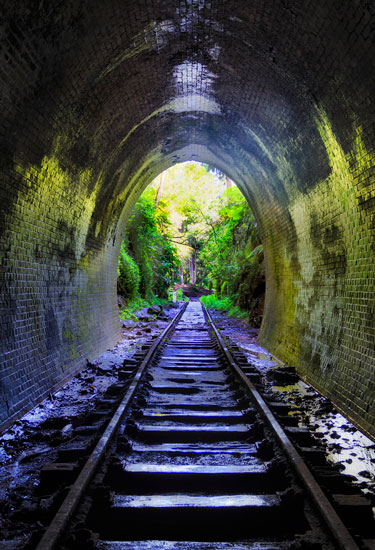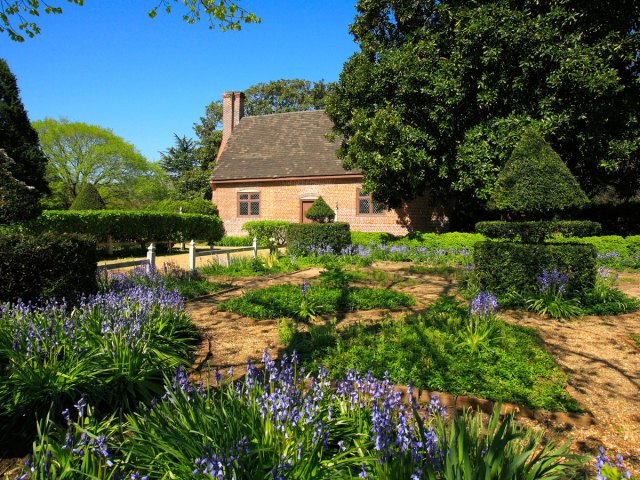Abandoned places have a mystical attraction to many travelers. Whether they are the remnants of once-thriving villages or distinguished architecture, these sites offer a fascinating window into the past and the chance to hear compelling stories about their original purpose, former inhabitants, and their eventual demise. Fortunately, not all deserted places are left to complete ruin. Discover seven abandoned monuments that have since become popular tourist attractions.
Bannerman Castle – Pollepel Island, New York
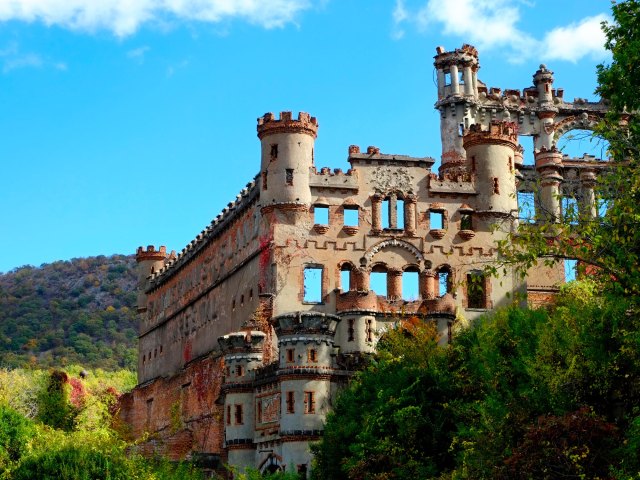
The history of the Bannerman Castle dates to 1854, when Francis (Frank) Bannerman, the young son of a Scottish settler, arrived in New York City. From an early age, Bannerman had an interest in collecting scrap from local harbors, and this developed into a family business of buying surplus Civil War and Spanish War military stock at government auctions. However, a change in city laws left Bannerman looking for a storage space for his stockpile of weapons and ammunition. In 1901, he chose Pollepel Island, situated on the Hudson River 50 miles northeast of New York City, and decided to build a replica Scottish castle to store his ever-increasing collection. For over 60 years, the castle largely served as a warehouse, before it was acquired by the state and sadly ravaged by fire and left to ruin in 1967.
Today, the castle ruins are accessible via boat cruises from the town of Beacon and kayak tours (visitors must have their own kayak), with either a guided or self-guided tour of the grounds. Open-air movie nights take place from May to September; other events throughout the summer include theatrical performances, live music, farm-to-table dinners, and butterfly tours.
Glow Worm Tunnel – New South Wales, Australia
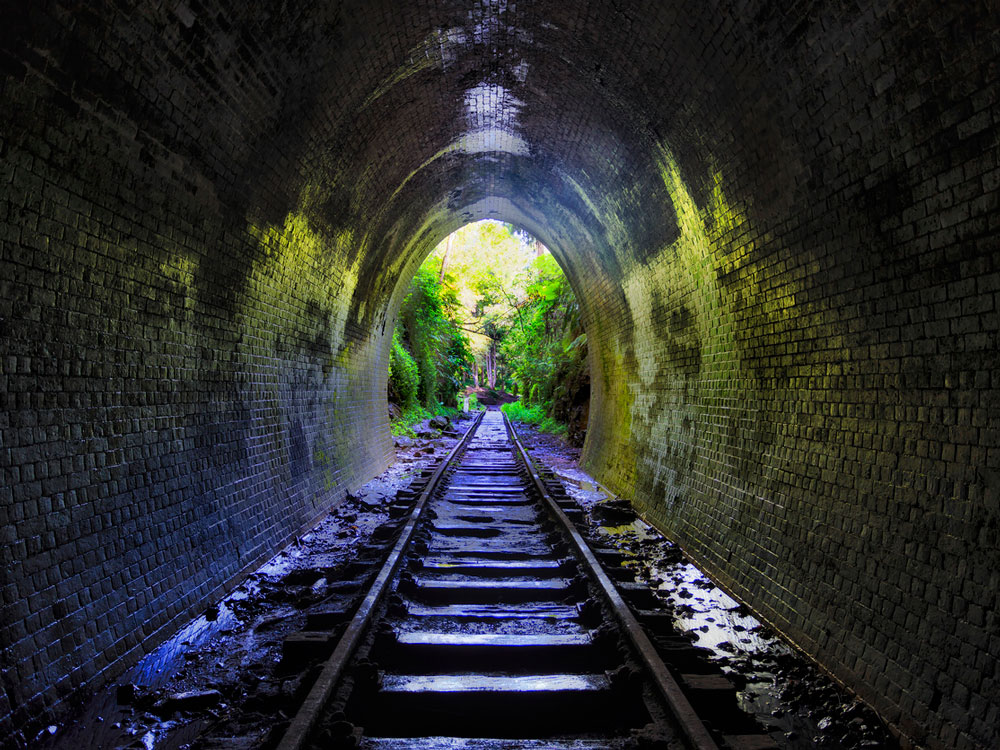
Lit by thousands of otherworldly glow worms, the beguiling Glow Worm Tunnel is part of the UNESCO-listed Wollemi National Park in New South Wales, about a five-hour drive northeast of Sydney. In the 1900s, a railway line was installed here as a transport link between the town of Lithgow and the Newnes Kerosene Shale Works mine. Workers used the line until the 1940s, after which it was dismantled and abandoned. Nature then slowly began to reclaim the area, and the glow worms took up residence inside the tunnel’s damp walls. The insects — which aren’t actually worms, but rather the larvae of the fungus gnat — emit a stunning bright blue light thanks to a chemical reaction inside their bodies.
When entering the 1,300-foot-long tunnel, it’s advisable to remain quiet and switch off any flashlights before waiting for the bioluminescent bugs to put on their one-of-a-kind light show. The approach to the tunnel is equally spectacular, with narrow gorges and verdant forests of fern trees. During the summer months, bright-yellow pagoda daisies also decorate the trail, and wildlife sightings are common in the area — including native species such as lyrebirds, koalas, and swamp wallabies.
Kloster Allerheiligen – Oppenau, Germany
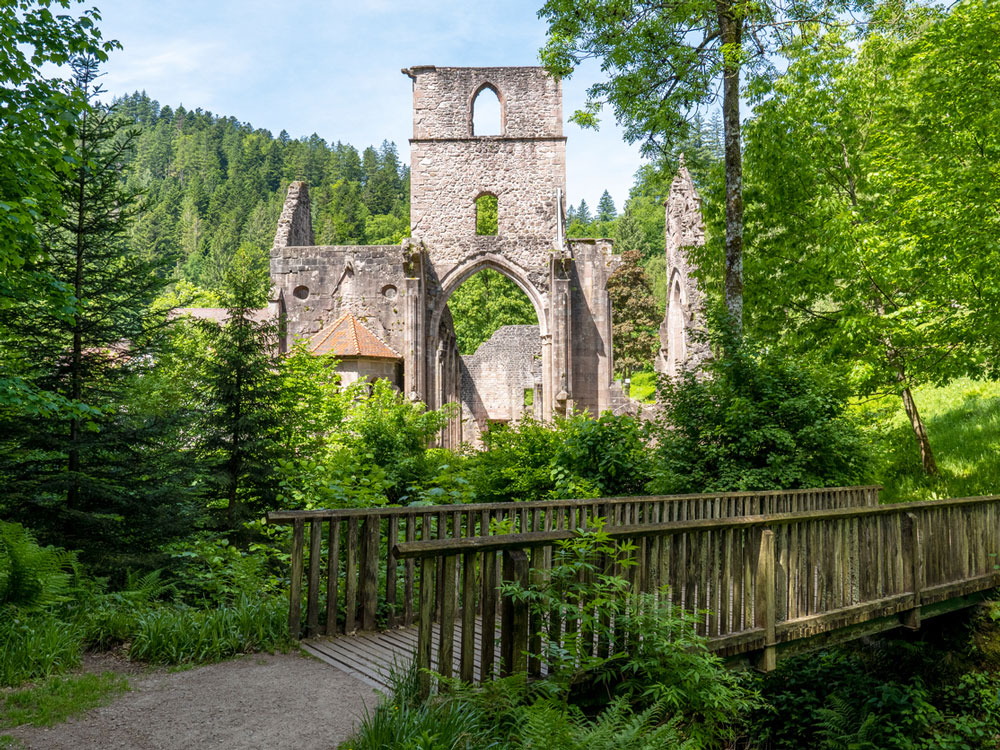
The weather-battered Kloster Allerheiligen (All Saints Abbey) is located in a remote stretch of the Black Forest, in the southwest German state of Baden-Württemberg. Wealthy heiress Dutchess Uta von Schauenburg first erected a wooden monastery here in around 1192. She supposedly chose the spot when her donkey threw off a bag of gold, which landed here after tumbling down a valley. Over the next century, the site was enlarged and converted into a Premonstratensian monastery. But an unfortunate sequence of events saw it severely damaged and repaired in 1470 and again in 1555. By 1657, the monastery had become an abbey and prospered throughout the 1700s. Sadly, everything came to an abrupt end in 1804 when a lightning strike triggered yet another fire and the abbey fell into ruins.
Visitors today can wander beneath what remains of the abbey’s towering arches, which are especially impressive when draped in winter snow or framed by autumn colors. In summer, visitors can also explore an adjacent Baroque garden or follow a trail into a picturesque gorge to All Saints Waterfalls. These seven cascades flow over steep cliffs and are thought to be the tallest waterfalls in the Black Forest.
Miami Marine Stadium – Miami, Florida

When it opened in 1963 on Virginia Key, the 6,566-seat Miami Marine Stadium was the epitome of sun-drenched Miami living. Powerboat races, Sunday services, concerts by Queen and the Beach Boys, and even the filming of the 1967 Elvis Presley movie Clambake all took place here. Designed by 27-year-old Cuban architect Hilario Candela, the modernist stadium’s roof featured the world’s longest span of cantilevered concrete at the time. Unfortunately, the venue closed in 1992, when it was deemed unsafe in the aftermath of Hurricane Andrew.
Since then, the stadium has become a go-to spot in Miami for graffiti artists, and brightly colored murals now sprawl across the seating tiers. Although visitors cannot legally enter the stadium itself, they can admire the waterfront structure and its spectacular vantage point of the bay and the glistening Downtown Miami skyline from afar. Several unsuccessful plans have been put forward over the years to revitalize the landmark, and now the National Trust for Historic Preservation is attempting to raise capital for its restoration through donations and special fundraising events, which allow the public to enter the stadium.
Panathenaic Stadium – Athens, Greece

One of the major historic landmarks of Athens, the Panathenaic Stadium hosted the inaugural modern Olympic Games in 1896. Designed by Greek architects Ernst Ziller and Anastasios Metaxas, it’s the only arena in the world built entirely of marble. The stadium stands on the original site of an arena built by the orator Lykourgos in 338 BCE. Roman senator Heordes funded improvements between 139 and 144 CE, during which time the capacity increased to 50,000 spectators. That figure had increased to 80,000 by the time of the last notable sporting events to take place here: the archery contests and marathon finish during the 2004 Summer Olympics.
While the Panathenaic Stadium is still in working condition, it has fallen out of use in favor of modern sports stadiums. Fortunately, the iconic arena is open to visitors. An audio guide details its long and storied sporting history in addition to nearby heritage sites such as the Tomb of Herodes Atticus. Visitors can watch video highlights of the 2004 Summer Olympics, browse Olympic exhibitions, and even run on the track in the footsteps of hundreds of top athletes.
Winchester Mystery House – San Jose, California
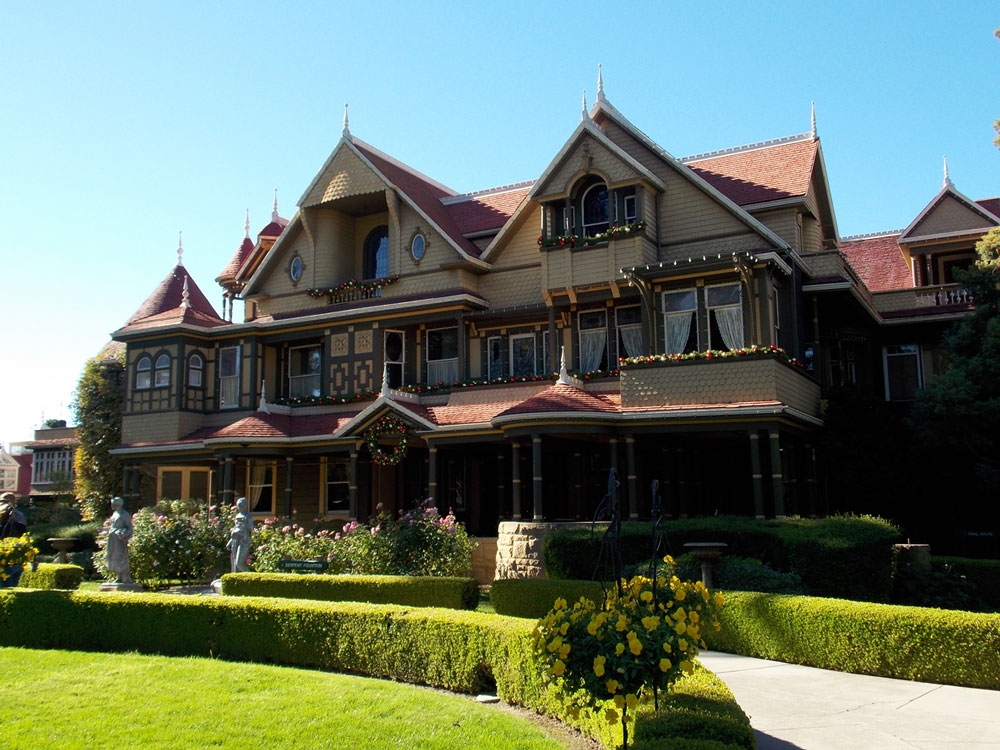
Similar to many abandoned monuments that have captured the imagination of tourists, the Winchester Mystery House has a spellbinding history. When tragedy befell Sarah Lockwood Pardee, the widow of gun magnate William Winchester, she moved to San Jose in 1886 and purchased a modest farmhouse. For 36 years, until her own passing in 1922, Winchester funded the transformation of the house into an eccentric Victorian mansion with a labyrinth-like interior. Some say she was guided by a psychic, while others believe she was inspired by the ghosts of victims of Winchester guns.
Winchester Mystery House was auctioned and sold in 1922, and it opened as a tourist attraction a year later. Today, visitors can tour its 160 rooms filled with whimsical and puzzling architectural features — including staircases that lead straight into ceilings, doors that open up to 15-foot drops, and secret passageways. The gardens are decorated with 10,000 box hedges and statues of Cupid and Mother Nature, among several other mythological statues.
Witley Court and Gardens – Worcester, England
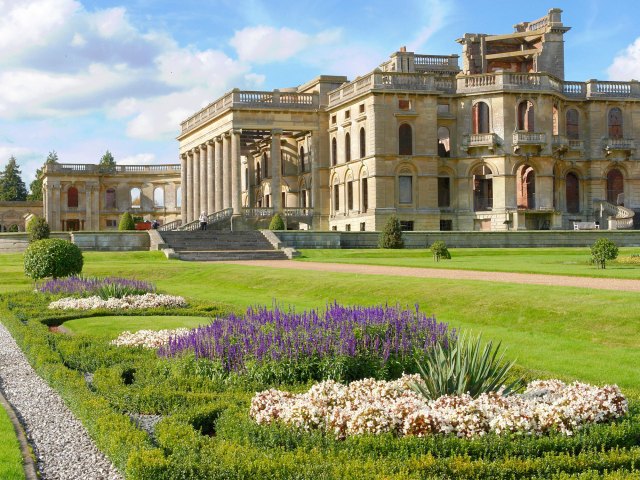
Witley Court and Gardens was established in 1655 when a member of the aristocratic Foley family purchased a Jacobean mansion in central England’s West Midlands region. The family used a fortune amassed from the iron industry to further expand this typically English stately home. Although the Foley’s wealth eventually began to decline, a favorable marriage in the 1800s allowed them to hire esteemed architect John Nash to complete additional work on the home. After the Earls of Dudley purchased the estate in 1833, it became the scene of lavish balls and parties attended by royals. Then, one tragic night in 1937, a fire started in the servant’s quarters and ravaged the mansion, leaving little but a charred frame.
After the fire, the property was stripped bare and never inhabited again. Still, the former grandeur of this one-time architectural masterpiece is obvious to visitors today, and the restored gardens showcase the decadent lifestyle of the aristocrats and monarchs who called it home. The property also features serene woodland walks, an ornate fountain of the Greek gods Perseus and Andromeda, and an Italianate-Baroque church.
More from our network
Daily Passport is part of Optimism, which publishes content that uplifts, informs, and inspires.






